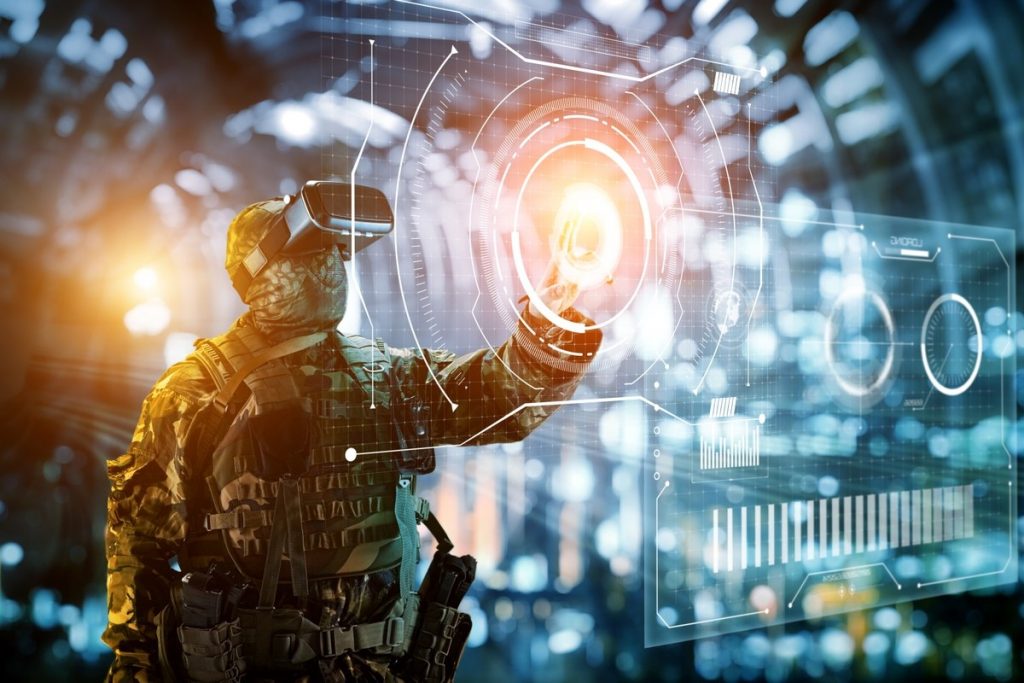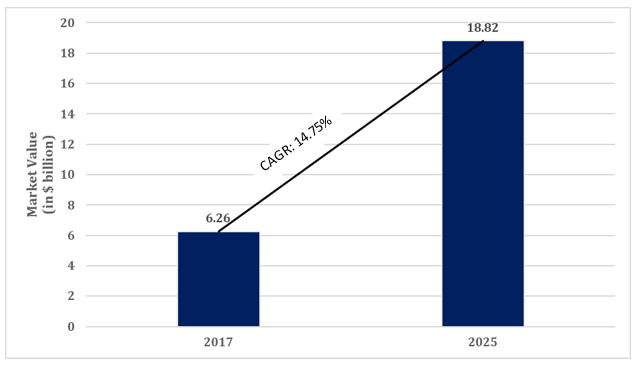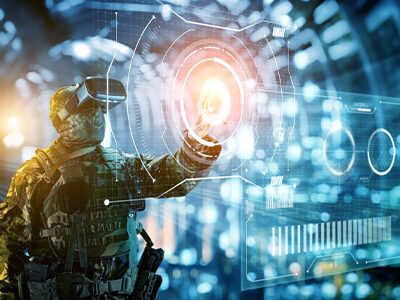How AI Strengthens the Indian Army
India holds the 4th rank in terms of the Army strength, with the US, Russia, and China placed ahead of it. Despite being in the prestigious top-5 armies of the world, the defense budget doesn’t seem to invest much in the technological advancements for our forces.

In India, the budget allotted to AI-related products is much smaller compared to the frontrunners. The announcement made by the Defence Ministry stated that 25 defense-specific AI products would be developed in the next five years. This might be seen as a welcoming move. At the beginning of the year (2019), the Indian Army Chief, General Rawat stated the importance of AI in the army and emphasized what its late adoption would mean to the defense forces.
Steps Taken by the Indian Government
In February 2019, the Defence Ministry laid the foundation for a high-level Defence AI Council or DAIC. It has been assigned the task of providing strategic insights towards adopting AI in the defense sector. DAIC will also be monitoring the partnership that is going to exist between the Indian Government and industry. Further, it will also review the recommendations related to technology acquisition. Today, it also overlooks the formation of a Defence AI Project Agency (DAIPA) as the central executive body.
Robotics is one approach through which AI could be achieved in this sector. The Centre of Artificial Intelligence and Robotics (CAIR) wing present in DRDO is also developing autonomous technology-based products with a focus on the net-centric communication system for tactic command controls. For catering the surveillance and reconnaissance purposes, CAIR has already developed intriguing probes. It houses a comprehensive library dedicated to AI-based algorithms and data mining which could be used for image and video recognition, NLP as well as swarming.
Deploying AI in Indian Army
Indian Army could exploit the potential uses for AI and for quick and effective enhancement that the technology offers. The AI incorporation in the functioning of the Indian Army could result in long-term cost reduction besides improvement in technological capabilities. As an analogy, some form of the technology of the below-listed use cases are already present in one of the forms in the civilian domain.
Following are three verticals where AI could be readily deployed in the Indian military forces without much of the efforts-
1. Logistics and Supply Chain Management:
This is the cheapest potential on which the Indian Army can encash easily. A significant amount of work has already been done for deploying Ai in logistics and supply chain management for civilian purposes. It would not take much of the effort that has to be done for transferring the knowledge, technology, and expertise to meet the defense needs. An efficient logistics system lies at the core of a well-equipped military. With Indian Armed Forces this is quite complicated considering the diversified environments and conditions that are exposed to. AI-supported systems could have a long journey in terms of increasing efficiencies, reducing wastage along with overall costs in the defense’s logistics management.
2. Cyber-operations:
Specially-trained AI systems could prove to be more efficient and effective than humans for tasks like- protecting the military’s assets, communication links. Scale and speed of the responses are essential for evolving cyber-operation domains that could be unlikely for humans to tackle the emerging threats effectively. Many domain experts (cyber-operations) believe that Artificial Intelligence is going to be the future of cyber-operations supported by increased norms of machine-on-machine engagements to tackle the lower-degree or routine threats.
3. Intelligence, Surveillance, and Reconnaissance (ISR):
It has already been in practice by leading counties of the world. The use of AI tasks could occur in two forms. The first one being the use of AI in unmanned systems and vehicles across different terrains like- air, land, or on and underwater. These “smart” systems could be used for patrolling in the toughest of terrains and weather conditions. The second approach includes the use of data analytics and interpretation. An AI system could be trained for segregating pre-decided suspicious behavior based on the video footage obtained from the surveillance drone and identify the potential targets. A majority of these tasks are being currently manually done and consume a lot of human time. With the deployment of AI, all these tasks could be done in a short period in an enhanced efficient manner.
Challenges in Adopting AI for Army
1. The main challenge that lies in adopting AI is that the policymakers need to have a clear understanding of the AI objectives that it seeks to accomplish for adopting AI in defence. A clear vision of any AI acceptance in a middle-incomed country like India can’t make such heavy investments in this sector. In a country like India, there is always a tradeoff that exists between the spending done on national security and public welfare. Unlike the developed countries, India doesn’t have the luxury to fail at the first attempt due to the shortage of key resources.
2. Another challenge that arises is the lack of critical infrastructure, and this is one of the biggest obstacles towards the AI prospect for both- military as well as civilian uses. AI runs on complex algorithms backed by a large volume of data; thus, it becomes quite essential to have robust hardware that enables the data banks to be present within the territorial boundaries of India. If critical AI-based military technologies are to harness the data present on the remote servers that exist outside the Indian borders, then it could damage the objectives of Indian foreign policies.
3. The role of the private sector will be crucial for making AI accessible and efficient. AI demands a high skill-set and capital, along with innovations that need an ecosystem to support the free flow of money along with skills. Due to the existing FDI policy that exists in defense, India has been conservative for handing the reins of the defense industry to the private sector.
The rising threats of a war-like situation have increased the demand for more autonomous vehicles and UAV-controlled systems. Also, AI can help the forces for aggregating the information and coming up with relevant conclusions based on it. The deep learning tools also help in creating effective strategies in case of a war.
Global Military AI Market
The AI in Military Industry was valued at $6.26 billion in 2017 and is expected to scale to $18.82 billion by 2025. It is predicted that the market will witness a CAGR of 14.75% in the forecasted period.

The key growth driver of this market is the emerging demand for advanced military equipment. Also, increased investments in the defense industry are the principal reason for the more extensive adoption of AI. The industry has also witnessed a rise in technological developments related to AI. All these factors combined have led to the propelled growth of this industry.
- Considering Data Centers in India to Overcome Economic Conditions - May 10, 2022
- Determining Why Your Organization Needs Web Application Security - February 11, 2022
- How Does a Business Benefit with Managed Services - January 21, 2022
